Chiropractic Care is For the whole family!

What is "muscular imbalance"? Do I have it?
- posted: Jul. 07, 2020
To discuss muscle imbalance, we first need to talk about what it is and why it is important to avoid. To do this, we need to review the muscles and ligaments that can create the subluxations (misalignments in the spine that affect our nervous system) that we see in our office daily. We have started doing a lot of education and work to rehabilitate postural muscles to allow our practice members to stop creating these subluxation patterns in themselves. This allows them to also be more active in their care and take back their health. We want to make sure that if there's a muscular imbalance, we get it corrected, as well as aligning their spine to ensure their nervous system is functioning at 100%.
There are two ways we can look at imbalances in our muscular system. The first way solely puts attention on muscular imbalance: you go to the gym you train your biceps all the time, but you neglect your triceps. What you see is an arm that behaves abnormally. This person has a strong, contracted bicep, but also has weak or inhibited triceps. This imbalance can create issues for the elbow or the shoulder since they rely on both the bicep and tricep to function properly. The second type of muscular imbalance is a neuro-muscular imbalance. This type of imbalance features a neurological component which we typically see after some kind of trauma occurrence. The trauma will either inhibit or tighten a muscle which creates an imbalance in its counterpart or on the other side. Neruo-muscular imbalances are actually most often seen in the spine and create a difference in muscle tone when comparing one side of muscles to their counterparts on the other side of the spine. When a traumatic event occurs such as multiple microtraumas from weak posture or larger events such as car accidents, one side of spinal muscles will contract, becoming tight, while the other side stretches, becoming weak and inhibited. That imbalance actually creates the subluxations we treat or exacerbates underlying issues that contribute to creating the spinal misalignment.
Two of the most common patterns of muscular imbalance that we see currently are upper cross syndrome and lower cross syndrome. These patterns are increasing in society due to the increased amount of sitting we do daily and the decreased amount of activity. Upper cross syndrome is characterized by rounding of the shoulders and forward head posture. There is a weakness or inhibition of the back muscles such as the rhomboids and serratus anterior muscles (located between the shoulder blades) and contracted or tight anterior chest muscles such as the pectoralis muscles. In lower cross syndrome, there are tight, contracted quadricep muscles in the anterior thigh, as well as, tight low back or erector muscles. The weakened or inhibited muscles are the glutes and lower abdominal muscles. This pattern of muscle tightness and weakness creates a posture that has an extended belly and glutes that pushed back and out.
Both of these syndromes can cause related symptoms. Upper cross syndrome can manifest as as headaches, neck pain, and shoulder tension/dysfunction while lower cross syndrome can cause low back, hip and knee pain. These are all symptoms that we are recognizing and correcting in our office. If you or someone you know are experiencing symptoms such as these, please contact us for information on how to correct these muscular imbalances.
Office Hours
Our Regular Schedule
9:00 am - 1:00 pm
2:30 pm - 5:00 pm
9:30 am - 1:00 pm
2:30 pm - 5:30 pm
Closed
9:30 am - 1:00 pm
2:30 pm - 5:30 pm
9:00 am - 1:00 pm
2:30 pm - 5:00 pm
Closed
Closed
Location
Find us on the map
Primary Location
202 Uptown Square
Murfreesboro, TN 37129, US


